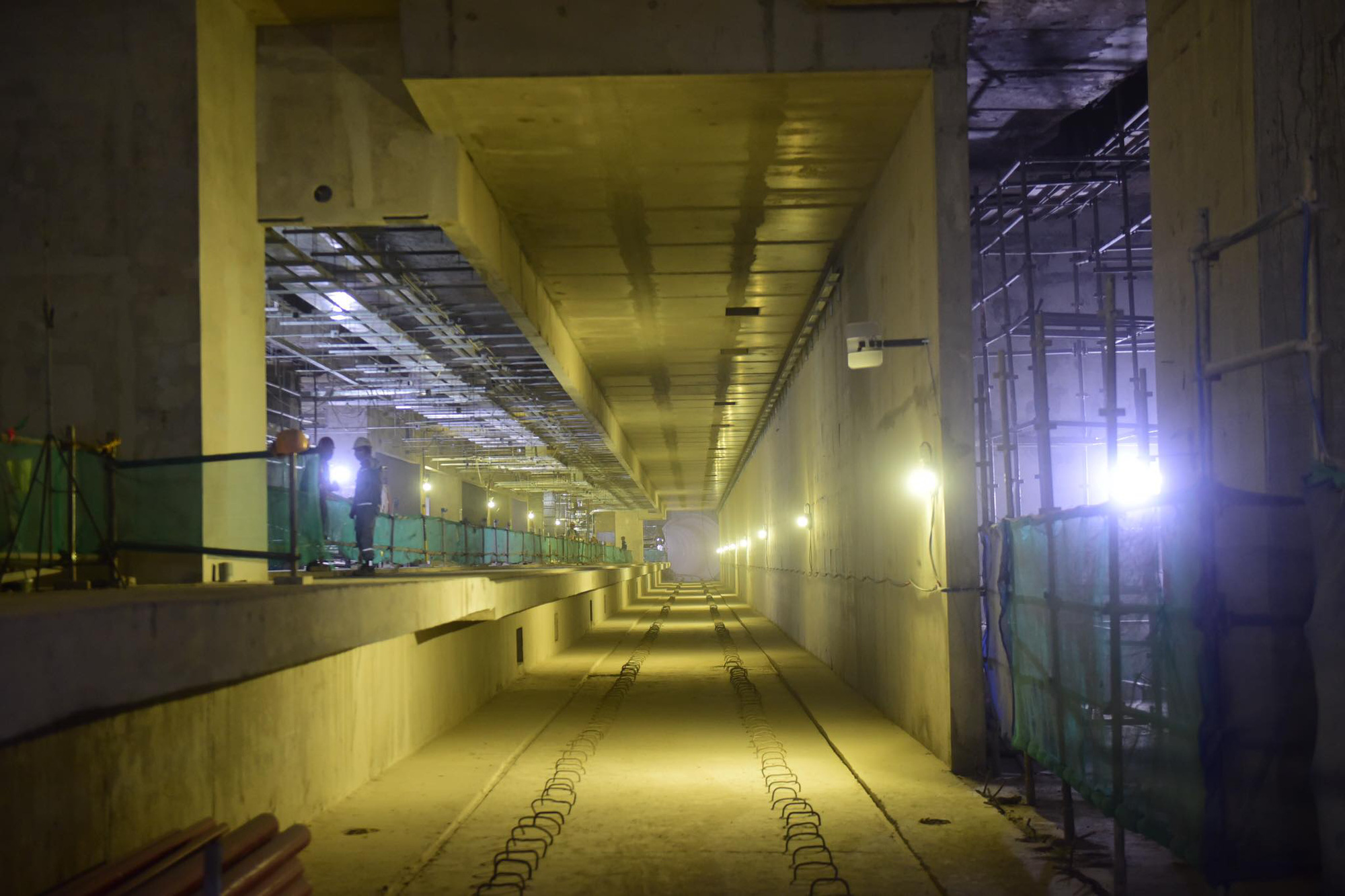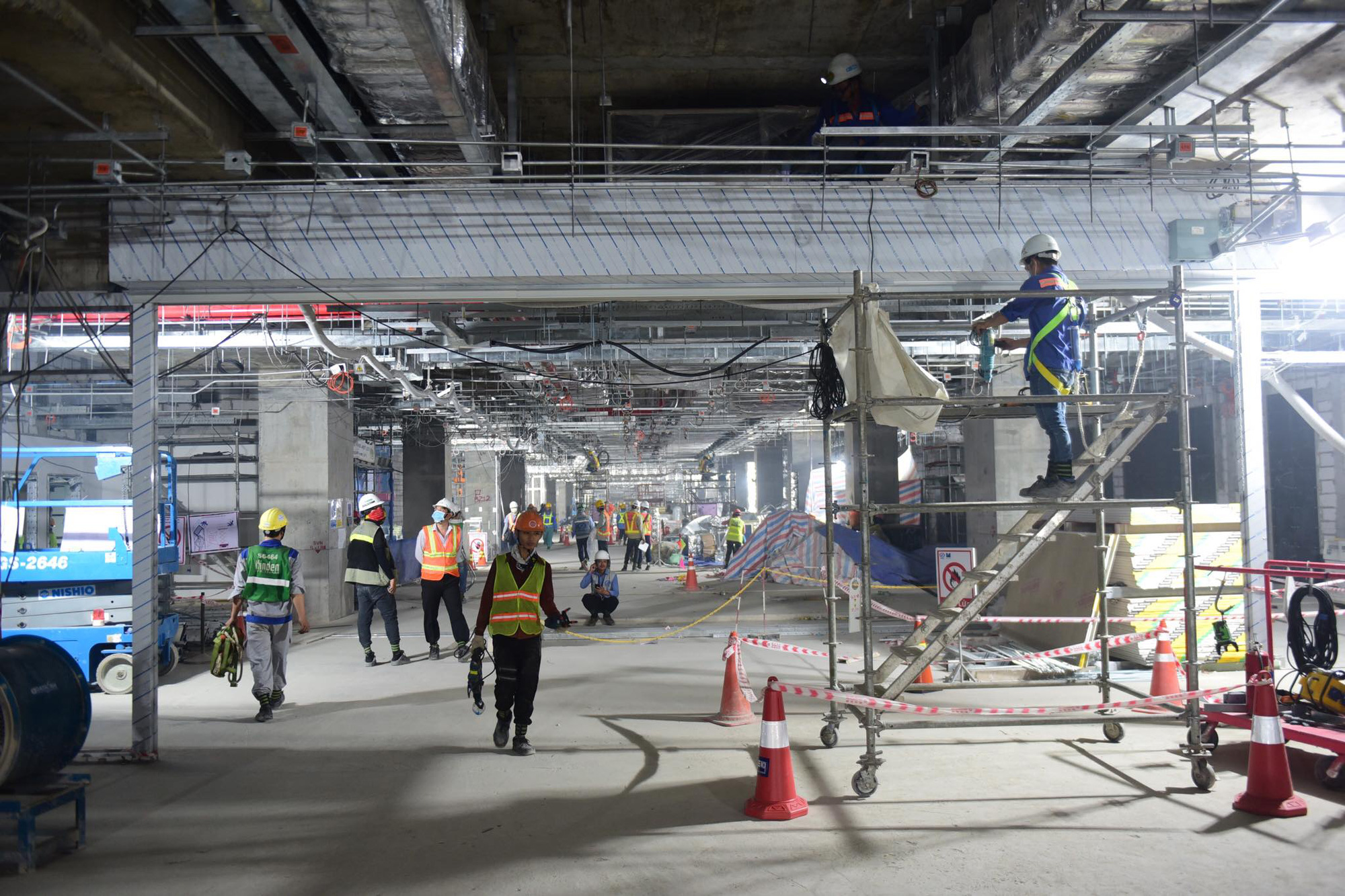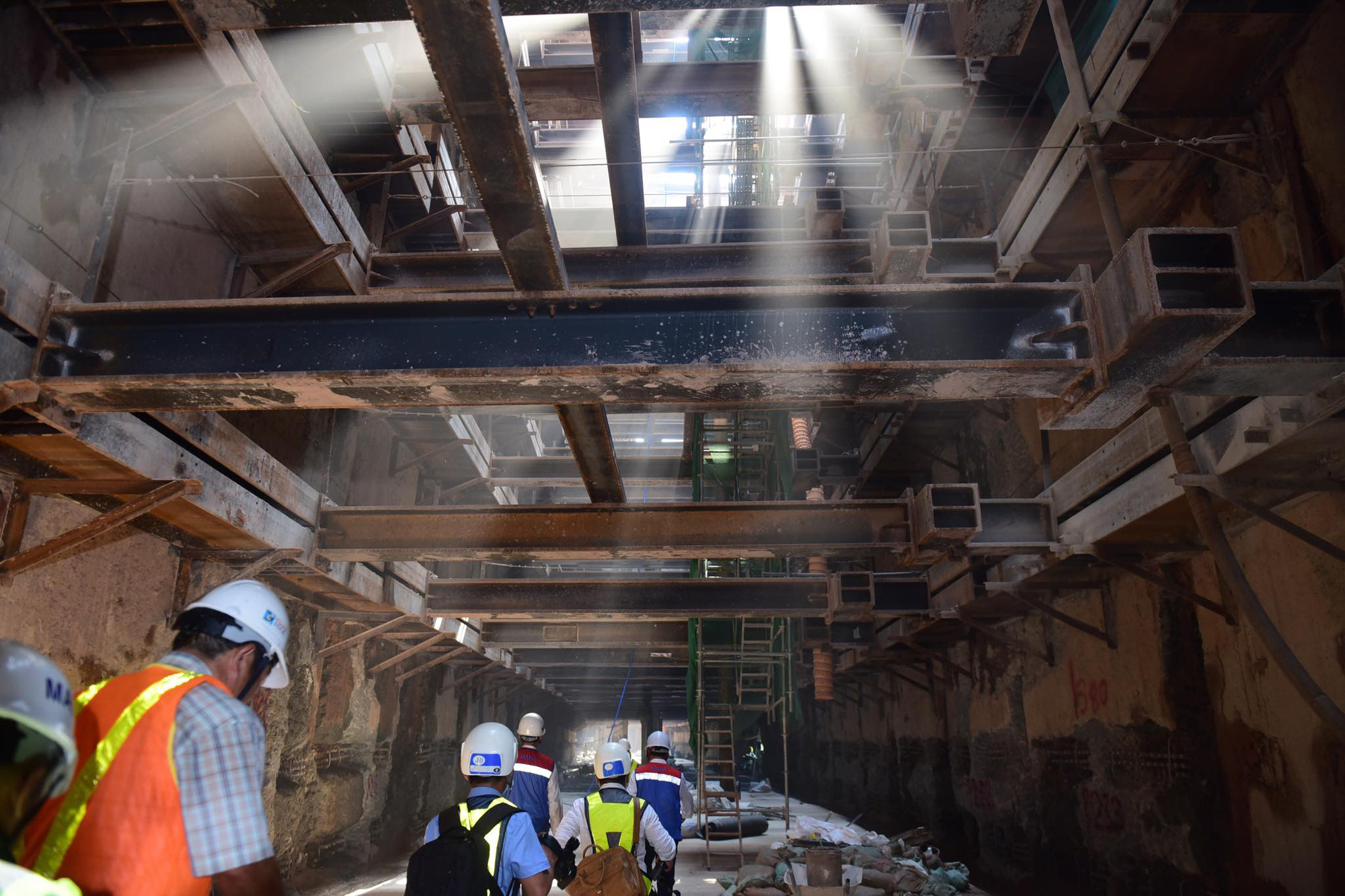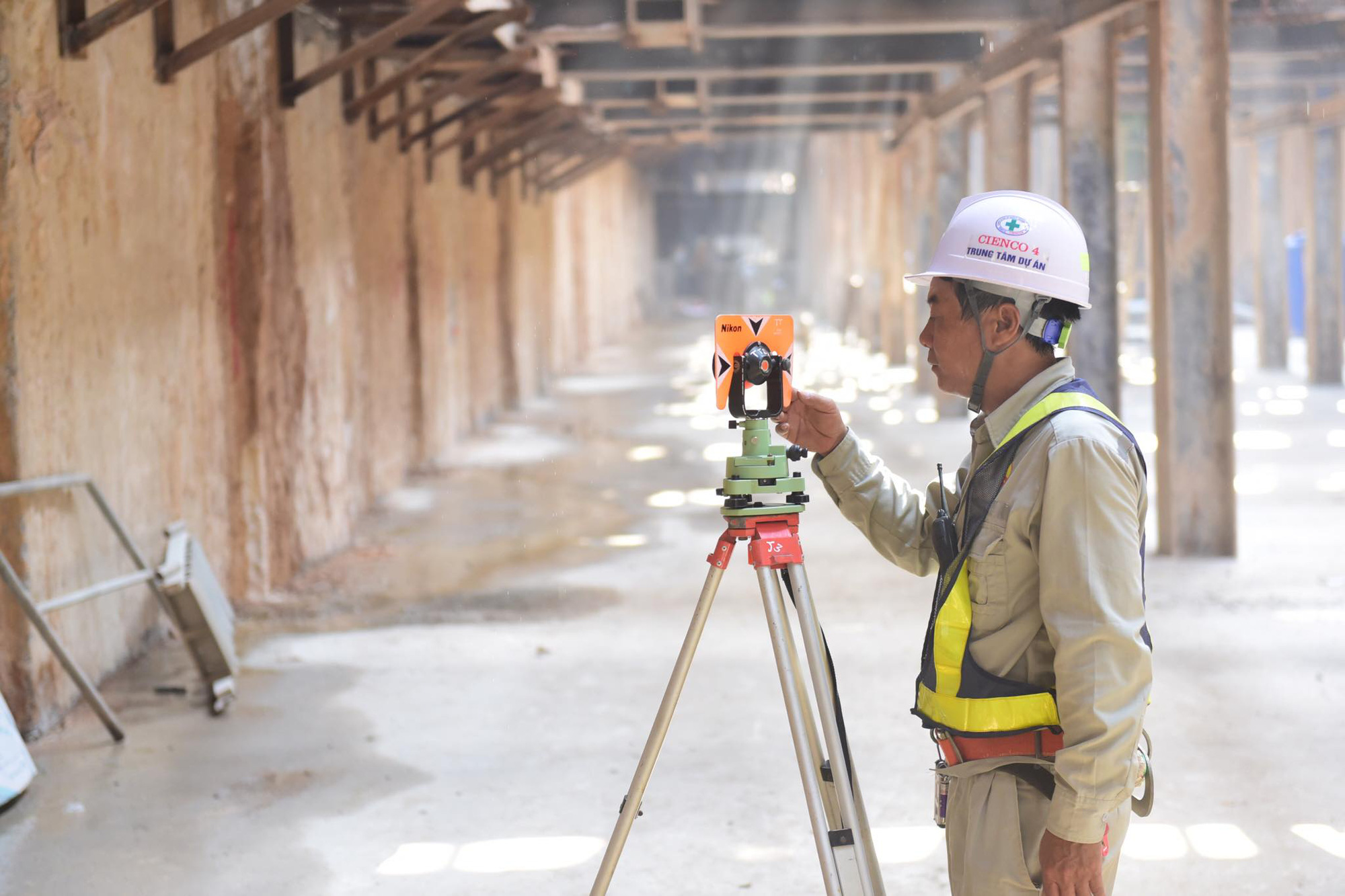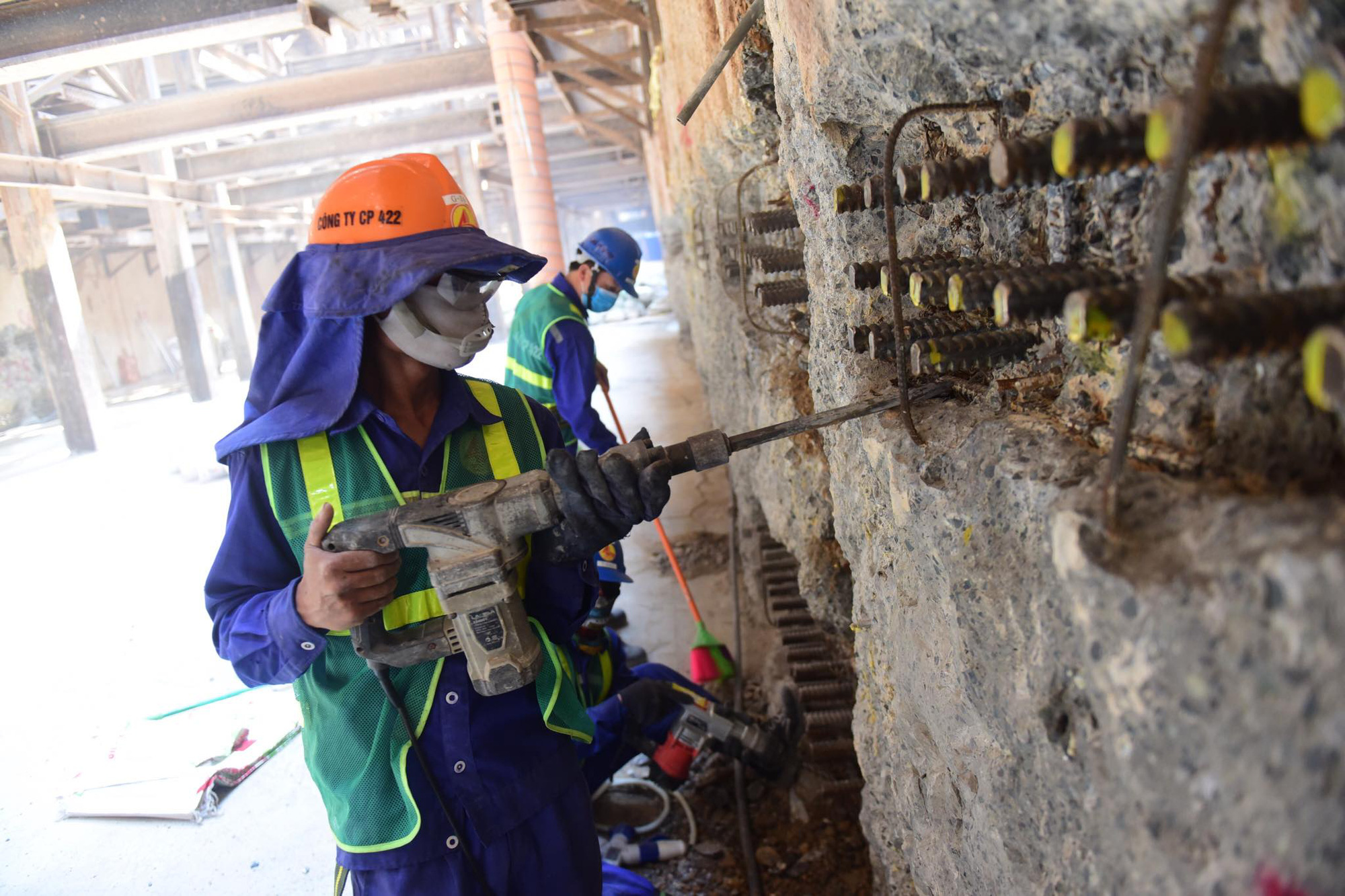Two underground construction packages of Ho Chi Minh City’s first-ever metro route have been joined as workers tore down a wall that separated the construction sites on Monday, marking an important milestone in the implementation of the project.
The connection of construction packages CP1a and CP1b means the entire length of the metro line, which runs nearly 20 kilometers between Ben Thanh Market in District 1 and the newly built Eastern Bus Terminal in neighboring Binh Duong Province, is now fully connected.
Comprising Ho Chi Minh City Municipal Theater and Ba Son Stations, the CP1b package, whose construction began in August 2014, has had 80 percent of the work completed.
Meanwhile, 65 percent of the CP1a package, which started in November 2016 and runs from the opera house through Ben Thanh Station, has been done.
Huynh Hong Thanh, deputy head of the municipal Management Authority for Urban Railways, said 71 percent of the workload for the entire metro line had been completed as of Monday.
The above-ground section of the line was put into place in June 2018.
|
|
| The underground section of Ho Chi Minh City’s metro line No.1. Photo: Quang Dinh / Tuoi Tre |
The agency is working hard to speed up the construction, ensuring that 85 percent of the four-package project will be completed this year, Thanh continued.
The city will receive its first shipment of trains for the metro route in June 2020. The metro line is expected to be commercially launched in late 2021, he added.
|
|
| People work at the construction site of Ho Chi Minh City’s metro line No.1. Photo: Quang Dinh / Tuoi Tre |
Funded in part through an official development assistance loan from the Japan International Cooperation Agency, the metro route No.1 runs 19.7 kilometers through District 1, District 2, District 9, Binh Thanh District, and Thu Duc District, as well as neighboring Binh Duong Province.
Since construction began in 2012, it has faced a multitude of problems including slow disbursement, delays, and personnel-related issues.
|
|
| The underground section of Ho Chi Minh City’s metro line No.1. Photo: Quang Dinh / Tuoi Tre |
|
|
| A man works at the construction site of Ho Chi Minh City’s metro line No.1. Photo: Quang Dinh / Tuoi Tre |
|
|
| People work at the construction site of Ho Chi Minh City’s metro line No.1. Photo: Quang Dinh / Tuoi Tre |
Like us on Facebook or follow us on Twitter to get the latest news about Vietnam!




